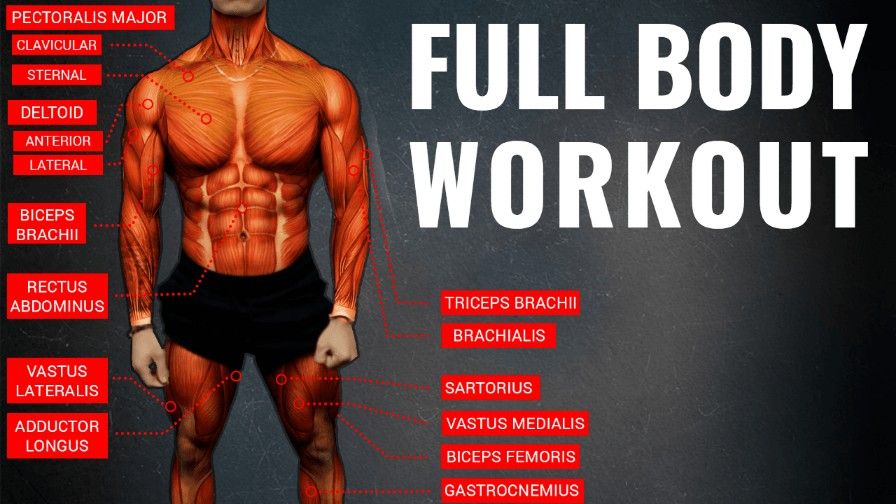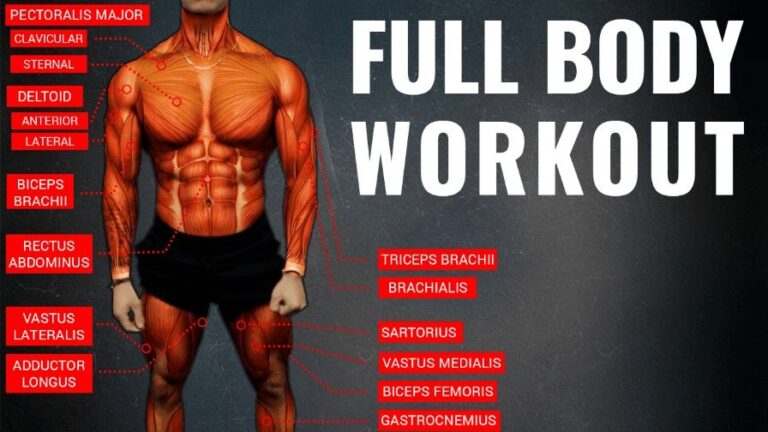Introduction
The Importance of a Well-Structured Workout Routine
An efficient workout routine is the cornerstone of achieving fitness goals, whether it’s weight loss, muscle gain, improved flexibility, or enhanced cardiovascular health. Exercise plays a crucial role in overall well-being, affecting everything from your mood to your sleep quality. However, not all workout routines yield the same results. A well-structured routine that aligns with your fitness goals, current health status, and lifestyle is essential for optimal results.
Factors Influencing Workout Results
Several factors influence your workout results, including the type of exercises you do, their intensity, your consistency, and whether you combine your regimen with a balanced diet. Other personal factors, such as age, gender, genetics, and current fitness level, also play a significant role. It’s important to consider all these factors when designing a workout routine for maximum results.
Understanding Workout Goals

Defining Personal Fitness Goals
Before embarking on any fitness journey, it’s important to define your personal goals clearly. These could range from weight loss, muscle gain, improved cardiovascular health, increased flexibility, or enhanced athletic performance. Clear, measurable, and realistic goals not only guide your best workout routine design but also motivate you to stay consistent.
The Relevance of Goals in Determining the Best Workout Routine
Your fitness goals play a significant role in shaping your workout routine. For instance, if your goal is weight loss, your routine might focus more on cardiovascular exercises and high-intensity interval training (HIIT). On the other hand, if you aim to build muscle, strength training would be a primary component of your routine. By aligning your best workout routine with your fitness goals, you stand a better chance of achieving maximum results.
Types of Workouts and their Benefits
A. Strength Training
Strength training, also known as resistance training, involves exercises that make your muscles work against a weight or force. This type of workout is excellent for muscle building and boosting metabolism. Some examples of strength training exercises include weightlifting, resistance band exercises, and bodyweight exercises like push-ups and squats.
B. Cardiovascular Exercises
Cardiovascular exercises, often simply referred to as cardio, primarily target the heart and lungs. These exercises help improve endurance, burn calories, and boost cardiovascular health. Examples of cardio exercises include running, cycling, swimming, and brisk walking.
C. High-Intensity Interval Training (HIIT)
HIIT involves short bursts of high-intensity exercises alternated with low-intensity recovery periods. It’s a highly efficient workout method if your goal is to burn fat and improve cardiovascular fitness within a short period. HIIT workouts can include a mix of cardio exercises and strength training.
D. Flexibility and Balance Exercises
Flexibility and balance exercises are vital for maintaining mobility, preventing injuries, and improving performance in other workouts. Examples include stretching exercises, yoga, and Pilates.
E. Comparison and Applicability of Each Type to Different Fitness Goals
Each of these workout types offers unique benefits and can be more effective for certain fitness goals. For instance, strength training is essential for muscle building, while cardio is ideal for weight loss. HIIT can be effective for both weight loss and cardiovascular health, and flexibility exercises are crucial for overall mobility and injury prevention. It’s essential to incorporate a mix of these workouts in your routine for balanced fitness and maximum results.
Components of a Successful Workout Routine
A. Warm-up Exercises
A warm-up is a critical part of any workout routine. It prepares your body for the exercises ahead, increases your heart rate, warms your muscles, and helps prevent injuries. Your warm-up could include light cardio exercises, such as jogging or skipping, and dynamic stretches that mimic the movements of your main workout.
B. Core Workout Elements
The core of your workout routine should align with your fitness goals. This could be strength training, cardio, HIIT, or a combination of these. It’s essential to vary the exercises to challenge your body and prevent workout plateaus.
C. Cool-down Exercises
Cooling down after a workout helps gradually lower your heart rate and stretch your muscles. It aids in recovery and reduces the risk of muscle stiffness and soreness. Cool-down exercises could include light cardio like walking and static stretches.
D. Rest and Recovery
Rest is just as important as the workout itself. It allows your muscles to repair, recover, and grow stronger. Ensure to include rest days in your workout routine and get adequate sleep. Also, listen to your body and make adjustments if you feel overly fatigued or experience persistent soreness.
The Best Workout Routine for Maximum Results
A. Detailed Description of the Routine
An effective workout routine for maximum results should include a combination of different types of exercises. Start with a warm-up of light cardio and dynamic stretches. The core of the workout could contain strength training exercises on some days and cardio or HIIT on others. Aim for at least 150 minutes of moderate-intensity cardio or 75 minutes of high-intensity cardio per week, along with strength training exercises at least twice a week. Incorporate flexibility and balance exercises as part of your cool-down or on separate days.
B. Explanation of How Each Exercise Contributes to Overall Results
Each component of this routine contributes to different aspects of fitness. The warm-up prepares your body for the workout, reducing the risk of injuries. Strength training helps build muscle and boost metabolism, cardio improves cardiovascular health and aids in weight loss, while HIIT provides the benefits of both in a time-efficient manner. Flexibility exercises promote mobility and prevent injuries, while the cool-down aids in recovery.
C. Modifications and Variations to Suit Different Fitness Levels
Remember, this routine is not one-size-fits-all. Depending on your current fitness level and specific goals, you may need to modify the intensity, duration, or types of exercises. Beginners may start with less intense exercises and gradually increase intensity as their fitness improves. Those looking for more challenge can add more weight or complexity to their strength training exercises or increase the intensity or duration of their cardio or HIIT workouts. Always listen to your body and make adjustments as needed to avoid overtraining and injuries.
Nutritional Considerations for Maximum Workout Results
A. Importance of Nutrition in Achieving Workout Results
Nutrition significantly influences the outcome of your workout routine. The food you consume provides the energy needed for your workouts and the nutrients required for recovery and muscle growth. A well-balanced diet can enhance your performance, speed up recovery, and help you achieve your fitness goals faster.
B. Dietary Tips for Pre and Post-Workout
Before a workout, it’s best to eat a meal rich in carbohydrates to provide energy and protein for muscle repair and growth. Post-workout meals should also include protein for muscle recovery and carbohydrates to replenish energy stores. Hydration is also key before, during, and after workouts.
C. Supplements that Can Enhance Workout Results
Supplements can also support your workout routine. Protein powders can help meet your protein needs for muscle recovery and growth, while creatine can enhance strength and performance. Before starting any supplement, it’s best to consult with a healthcare professional or a nutritionist to understand what’s best for your individual needs and goals.
The Role of Consistency and Progress Tracking in Achieving Workout Goals
A. Consistency in Workouts
Consistency is key in any fitness journey. Regular workouts not only help you progress towards your fitness goals but also build healthy habits. It’s more beneficial to engage in moderate exercise regularly than to have intense, sporadic workout sessions.
B. Progress Tracking
Tracking your progress can be a powerful motivator and a useful tool for adjusting your workout routine as needed. You can track various metrics depending on your goals, such as weight, body measurements, strength levels, endurance, or flexibility. Regularly assessing your progress helps ensure that your efforts are yielding the desired results and allows you to make necessary adjustments to your routine.
C. Overcoming Common Barriers to Consistency and Progress
Common barriers to consistency include lack of time, motivation, or access to a gym. You can overcome these by finding a workout routine that fits your schedule, setting clear and achievable goals for motivation, and exploring home workouts or outdoor exercises if you can’t access a gym. Remember, the best workout routine is the one you can stick to consistently.
In conclusion, a well-structured workout routine, complemented by a balanced diet and consistent effort, can help you achieve your fitness goals. Listen to your body, make adjustments as needed, and stay committed to your fitness journey.
Conclusion
Recap of the Information Presented
In this guide, we’ve explored the components of a successful workout routine, including different types of workouts, their benefits, and how to structure them for maximum results. We’ve also discussed the critical role of nutrition and the importance of consistency and progress tracking in achieving your fitness goals.
Encouragement for the Reader’s Fitness Journey
Embarking on a fitness journey can be challenging, but remember, every step you take brings you closer to your goals. Stay consistent, listen to your body, and don’t hesitate to seek guidance or make adjustments as you progress. Fitness is a lifelong journey, and the most important thing is to find a routine that you enjoy and can sustain in the long run.
Final Thoughts
With the right approach and mindset, you can achieve your fitness goals and enjoy the process. Remember, this is not just about looking a certain way, but more importantly, about feeling good, being healthy, and improving your quality of life. Here’s to your health and fitness journey!
FAQS
1. Q: What are the key components of a successful workout routine?
A: The key components include a warm-up to prepare your body, a core workout that aligns with your fitness goals, a cool-down to aid in recovery, and rest periods to allow your muscles to recover and grow stronger.
2. Q: How does nutrition impact workout results?
A: Nutrition significantly influences your workout results. It provides the energy needed for your workouts and the nutrients required for recovery and muscle growth. Eating well-balanced meals can enhance your performance, speed up recovery, and help you achieve your fitness goals.
3. Q: What type of exercises should be included in a workout routine for maximum results?
A: An effective workout routine should include a combination of strength training, cardio, and HIIT exercises. Additionally, flexibility and balance exercises should also be incorporated.
4. Q: How can I modify the workout routine to fit my fitness level?
A: The intensity, duration, or types of exercises can be adjusted based on your current fitness level and specific goals. Beginners may start with less intense exercises and gradually increase intensity as their fitness improves.
5. Q: What supplements can enhance workout results?
A: Protein powders can help meet your protein needs for muscle recovery and growth, while creatine can enhance strength and performance. However, it’s best to consult with a healthcare professional or a nutritionist before starting any supplement.
6. Q: Why is consistency important in a workout routine?
A: Consistency is key in a fitness journey as regular workouts not only help you progress towards your fitness goals but also help in building healthy habits. It’s more beneficial to engage in moderate exercise regularly than to have intense, sporadic workout sessions.
7. Q: How can I track my progress?
A: Depending on your goals, you can track various metrics such as weight, body measurements, strength levels, endurance, or flexibility. Regularly assessing your progress helps ensure that your efforts are yielding the desired results and allows you to make necessary adjustments to your routine.

